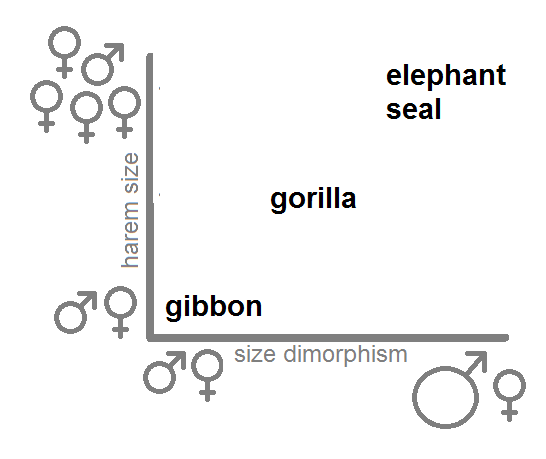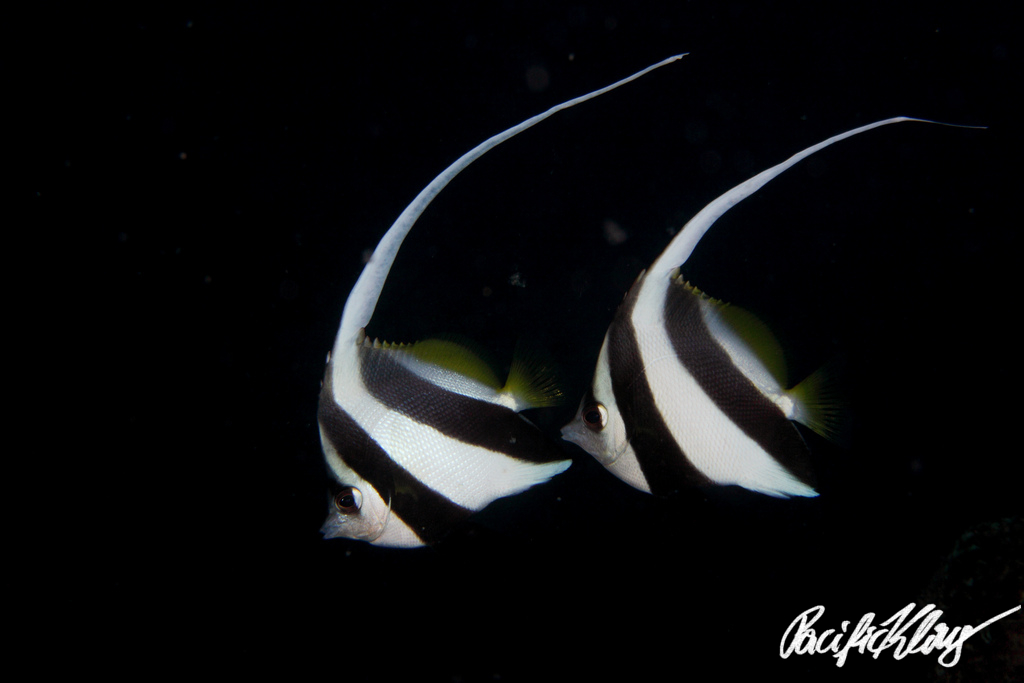Big Animals Dudes have Many Chicks
Gender Size Disparity and Harem Size in Mammals
by Dr. Klaus M. Stiefel
Biology is not such a hard science as physics – there are few carved-in-stone type of solid laws. In physics, nothing, and absolutely nothing with any type of mass can move faster than the speed of light. In biology, we see regularities and correlations, but there are often exceptions, or the rules only apply to a certain fraction of all living things. Such as the rule I’d like to discuss today, which is only valid amongst the mammals – warm blooded, air breathing vertebrate animals which give birth to live young. Of course, we humans belong to the mammals.
While these laws in biology are not physics-type all-universal, they are still very interesting, and sometimes we can learn something about ourselves.
“Baby, we are nothing but mammals, so let’s do it like they do it on discovery channel”
– Bloodhound Gang. “Bad Touch“
Indeed, mammals we are. And in mammals the size ratio between genders is correlated with harem size. What does that mean?
Let’s take a species quite closely related to us, the lovely gibbons, apes living in tropical Asia. In gibbons, the males and females are about the same size – The size ratio between genders is almost even. Or, in yet other words, there is very little sexual size dimorphism. And, gibbons form monogamous pairs – mister and miss gibbon live together one to one.
It’s different in another species of apes, the gorillas. Everyone knows and loves these largest of all living primates. But who really are the largest primates? The adult, male gorillas. These are truly gigantic guys. A back twice as wide as Brock Lesnar’s, and arms strong enough to rip considerable bundles of vegetation out of the ground at once. These gorilla gentlemen are vegetarians, and usually quite peaceful, but they are huge, up to 180 kgs in the wild. In contrast, female gorillas are only about half that size.
And, gorillas live in harems. Every big male lives with several spouses. Not every male gorilla gets to have a harem like that, but the ones which do will mate with multiple females. Big males → many females per male.
The most extreme example of sexual size dimorphism in mammals is seen in the elephant seals. Miss elephant seal looks like a large regular seal. Mister elephant seal looks like Jabba the Hut on Soviet steroids. And he acts the part as well. Male elephant seals fight vicious, bloody wrestling matches for beachside-dominance. The fight for a good reason: As you might have guessed by now, the oversized (relative to the females) winner gets to have a huge harem – up to a hundred seal ladies, and might sire up to 500 pups in a lifetime!

On the horizontal axes I have plotted the difference in size between males and females.
And the monogamous gibbons, haremic gorillas, and very haremic elephant seals occupy very different spots in this space.
These correlations between body size difference between males and females on the one hand, and the number of females per male hold across many mammalian species.
There are some caveats, of course. Remember, we are dealing with soft law-ed biology. The sexual body size dimorphism to harem size relationship holds best in primates and ruminants (cows and relatives). There are very likely also other factors influencing body size dimorphism. A basic causation, however, seems to hold: If males are fighting over a bigger prize – more females – they have a better evolutionary reason to get bigger.
Now, when this correlation between sexual size dimorphism and harem size is discussed in the context of human mating behavior, the comforting conclusion is always that in our species men are just slightly bigger than women, and hence monogamy is our natural state. Monogamy, just like Western bourgeois society prescribes it, how convenient.
But what do we as a species really see when we look ourselves in the mirror to observe our gender size differences? More specifically, what do I see in the mirror? I see a pretty muscular European man weighing 103 kgs, before breakfast. And, my two most recent spouses were two lovely Asian ladies less than half my size. This size ratio put us much closer to the gorillas in terms of sexual size dimorphism than to the gibbons. The haremic gorillas, not the monogamous gibbons.
And, humans intuitively understand this correlation. They understand them even if they have not studied theoretical biology at a University. It would have been a natural thing for big me to have a few more ladies on the side. I didn’t, but my girlfriend and wife were very much convinced that this is what I must be doing. Simple regular jealousy? That could be, but the contrast with my previous special ladies is striking. None of them were my size (that would not be sexy, thank you very much) but significantly closer, and one was even taller than I am. None of them were ever as irrationally convinced of me having fun on the side. Are my own experiences too small of a sample number? Sure! Is the plural of anecdote not data? Yes! But this all nevertheless fit well with the correlations we see across so many mammalian species. And there is nothing as satisfying as connecting what is happening right in front of yourself with some grand theory. Ha.

References:
Leboeuf, B.J., 1972. Sexual Behavior in the Northern Elephant Seal Mirounga Angustirostris. Behaviour 41, 1–26.
A fascinating study of the mating system of the northern elephant seals. Males mount whomever females and juveniles, push other guys off females while the two are mating, and abort copulations to attack other males. If I was anthropomorphizing, which I am not, I would say: Nasty.
Weckerly, F.W., 1998. Sexual-Size Dimorphism: Influence of Mass and Mating Systems in the Most Dimorphic Mammals. Journal of Mammalogy 79, 33.
A study of size dimorphism and mating systems. Dr. Klaus M. Stiefel is a neurobiologist, technical diver and under-water photographer. He grew up in Vienna, Austria, and now lives in Sydney, Australia. Neither of these nice places can be held accountable for his crazy writings, though. He has recently published “Sex, Drugs and Scuba Diving“, a popular-science account of scuba diving and marine biology.
